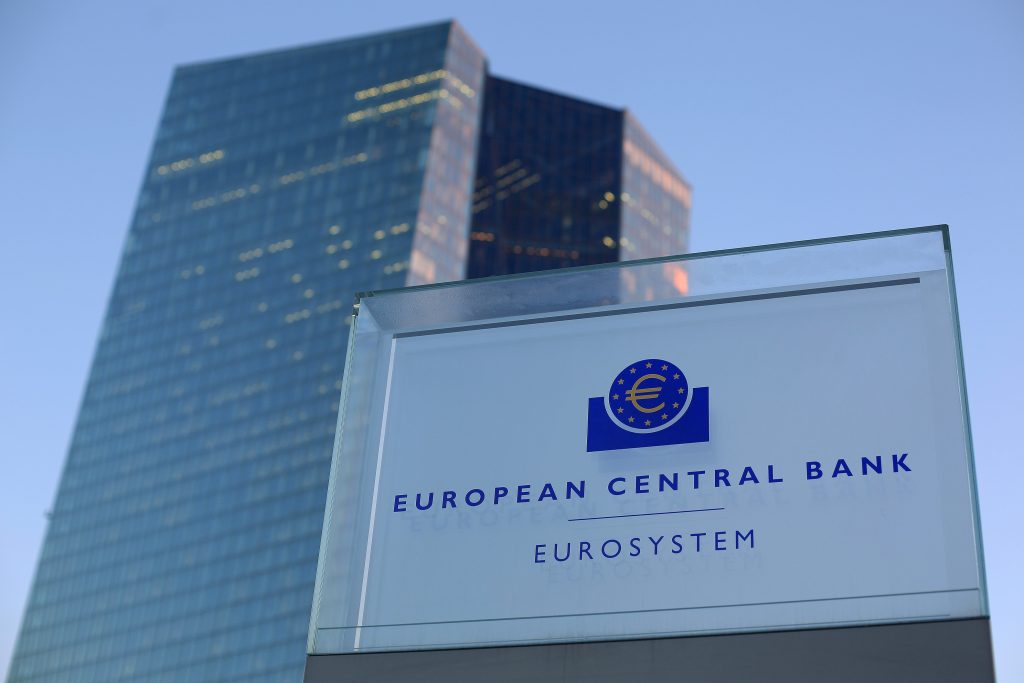(Reuters) – The European Central Bank pushed back against bets on imminent cuts to interest rates on Thursday by reaffirming borrowing costs would remain at record highs despite lower inflation expectations.
The ECB left borrowing costs unchanged and did not even hint at a possible reduction, highlighting instead that inflation would soon rebound and price pressures remain strong.
“Underlying inflation has eased further,” the ECB said.”But domestic price pressures remain elevated, primarily owing to strong growth in unit labour costs.”
It repeated its line that “rates will be set at sufficiently restrictive levels for as long as necessary.”
These changes run against investor bets on interest rate cuts in the first half of next year, in what would be a sharp reversal from the sequence of 10 consecutive increases that ended in September.
In a smaller policy change, the ECB brought forward the end of its last surviving bond-buying scheme – a legacy of the COVID-19 pandemic.
After Thursday’s decision, the ECB’s deposit rate stays at a record-high 4%. It was at a negative 0.5% only in July 2022.
Attention will now turn to ECB President Christine Lagarde’s news conference at 1345 GMT.
She has been under pressure to defend or ditch her guidance, which is just a month old, that rates would stay where they are for the next couple of quarters.
Investor expectations before the meeting pointed to a first rate cut in the spring, possibly as soon as March, which could make the ECB the first big central bank to reverse course after a concerted effort to bring down inflation since mid-2022.
Lagarde was likely to push back against rate-cut bets after it took the ECB a year and a half to steer inflation onto a convincing downward path.
But her job may have been made harder by the U.S. Federal Reserve, the world’s most influential central bank, which signalled late on Wednesday that lower borrowing costs would come next year, with policymakers indicating up to three cuts.
After the decision, traders trimmed bets on ECB rate cuts, which are now seen starting in April and totalling 140 basis points next year, compared to as much as 160 basis points earlier on Thursday.
A slim majority of economists polled by Reuters before the meeting thought the first rate cut would come by June.
WEAKER GROWTH AND INFLATION
The ECB’s updated economic projections pointed to lower inflation and growth, particularly for next year.
ECB staff expects headline inflation to average 5.4% in 2023, 2.7% in 2024, 2.1% in 2025 and 1.9% in 2026.
Inflation in the euro zone stood at 2.4% in November although it was expected to rebound somewhat in the coming months due to some tax changes and a lower basis of comparison a year earlier.
The trouble for Lagarde and her Governing Council colleagues is that the ECB’s projections have often been wide of the mark – most significantly in 2021, when the central bank failed to anticipate the surge in inflation.
This increases the importance of incoming data, particularly on wages, some of which is due only in the late spring.
Influential ECB board member Isabel Schnabel had set the tone last week, when she took further interest rate hikes off the table, citing a “remarkable” fall in inflation.
Lagarde is expected to echo Schnabel’s argument that policymakers should not guide for rates to remain steady through mid-2024, but instead focus on economic data.
The ECB also took a decision on the future of its Pandemic Emergency Purchase Programme, which it unveiled at the onset of the outbreak to stabilize markets and fight off the threat of deflation
This was due to run in full until the end of next year but, with markets now calm, the ECB said it would replace maturing bonds only through June and then phase out reinvestments in the second half of the year.



